
The Gocta Waterfall in Peru, commonly known as Gocta Falls, is one of the tallest waterfalls in the world. This 2,530-foot (771 m) waterfall has just two drops, and the powerful free-fall from the second drop is among the tallest in the world.
Named after the closest settlement, the local communities have appreciated the Gocta Waterfall for centuries. “Discovered” by an outsider in 2002, this impressive waterfall has only been on the world’s radar for a short time. With improved infrastructure in the area, the Gocta Waterfall is garnering more popularity than ever before.
The Catarata Gocta, its official Spanish name, or La Chorrera, its local name, sits in the Amazonas department of Peru near the city of Chachapoyas. Flowing into the Cocahuayco River, the Gocta Waterfall is in full view from nearby villages and has been for centuries.
However, the world didn’t know it existed until 2002 when German researcher Stefan Ziemendorff and a group of locals took an expedition to the waterfall. Following their visit and subsequent pressure on the government, the waterfall was finally measured in 2006. Since then, thousands of domestic and international tourists visit each year and tourism makes up a large part of the area’s income.
Amazon Rainforest Tours:
Its official rank among the tallest waterfalls in the world has varied and changed over time. According to the World Waterfall Database, this soaring waterfall currently ranks 17th by overall height and 4th by tallest free-falling drop. The second drop free-falls an impressive 1,772 feet (540 m).
Two other waterfalls in Peru, Las Tres Hermanas and Yumbilla, are taller by overall height, but the Gocta Waterfall is the most well-known and easiest to access.
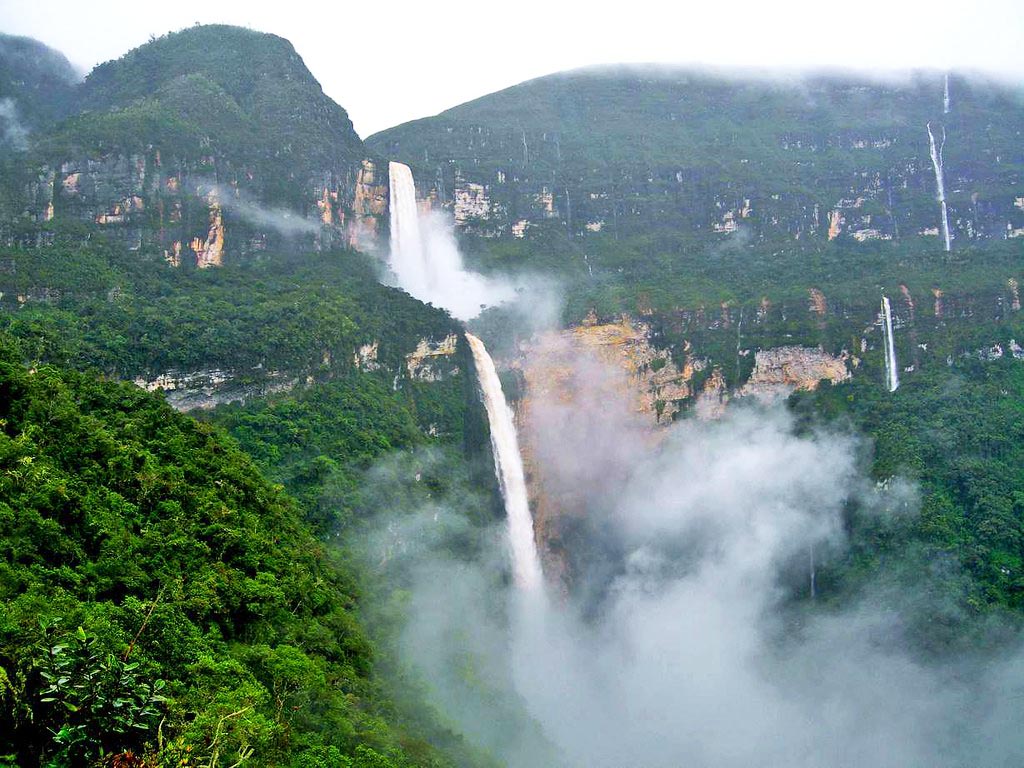
The Gocta Waterfall surrounded by lush jungle vegetation. Image: Cataratas Gocta, Distrito de San Pablo, Bongara, Amazonas, Perú by MI PERU, used under Public Domain Mark 1.0 / Compressed from original
The world has only known about this waterfall’s existence for a short time. The waterfall gained some fame in 2002 after an outsider visited the area with some locals, but it wasn’t until the official measurement in 2006 that the world really took notice. Before this, only locals knew of the Gocta Waterfall.
But why didn’t the locals tell others about such a beautiful place in their backyard? In short, the local people feared a curse if they got too close.
Legend has it that a beautiful blonde mermaid, protecting a pot of gold, would curse whoever approached her waters. At the bottom of the waterfall, the water even splits into a U-shape, mimicking the mermaid’s hair. Making matters worse, a giant snake, the mermaid’s bodyguard, inhabits the pool below.
Today, many travelers reach the falls without experiencing a curse or seeing these mythical creatures. Nonetheless, the enchantment and disappearance of a local farmer named Juan Mendoza strengthens the claim of this local legend.
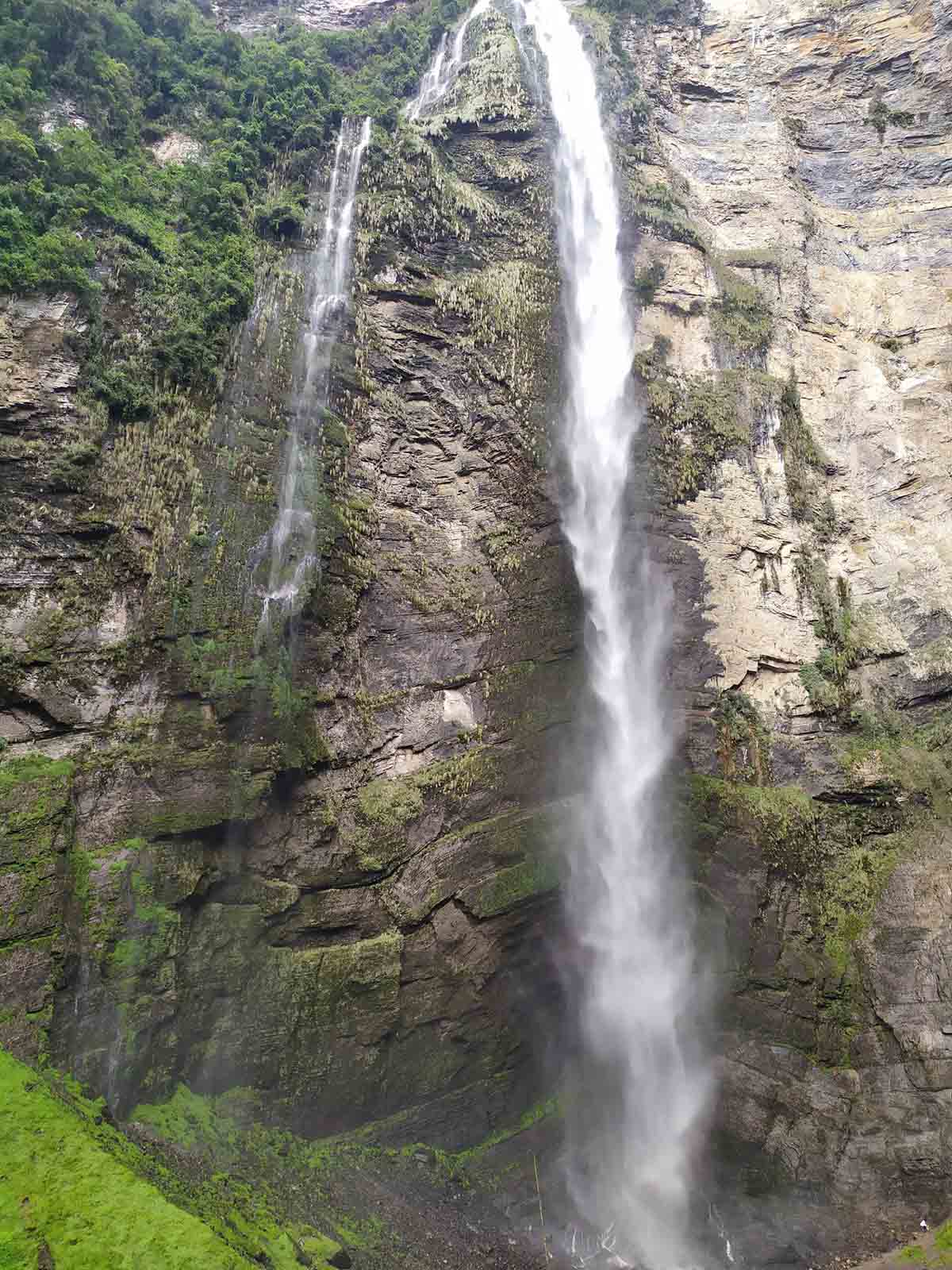
The upside down U-shaped split at the bottom of the waterfall. Photo by Mikey Blount of Peru for Less.
There is no bad time to visit the Gocta Waterfall, as it flows year-round. However, the recommended time to go is on the cusp of the rainy season and dry season, from April to June. As the rainy season comes to a close, the falls are still full and powerful, but the likelihood of getting rained on is less.
If traveling during the rainy season from October to April, you can expect a full and powerful waterfall, but be sure to bring a rain jacket or poncho along. During the dry season, from May to September, there’s less rain and more sunny days. However, this is when the waterfall has less water rushing through.
While there are never that many tourists in this area, the busiest months are July and August. We recommend beginning your Gocta Waterfall hike early in the morning, around 7 or 8 AM, to beat any small crowds.
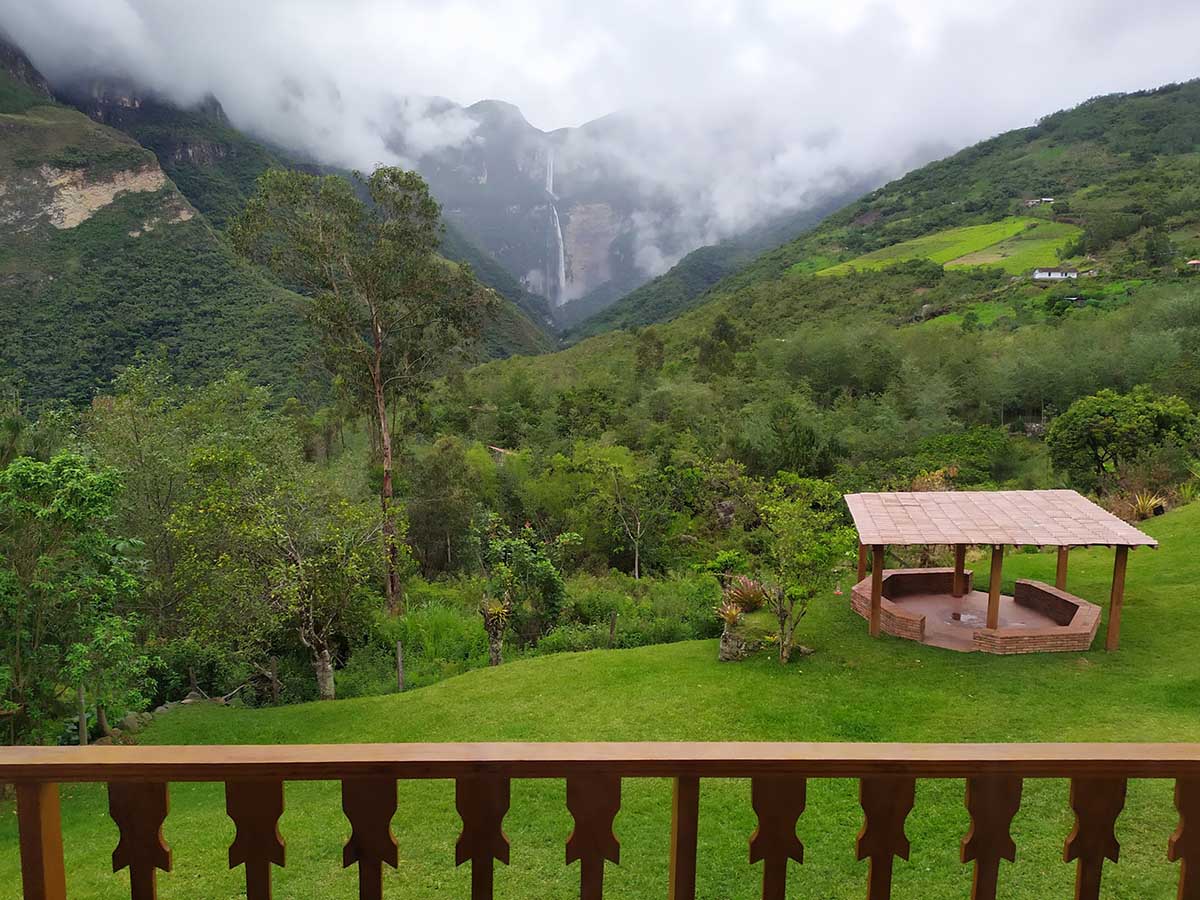
The Gocta Waterfall from the Gocta Andes Lodge. Photo by Mikey Blount of Peru for Less.
To reach the Gocta Waterfall, you must first travel to the remote Amazonas region of Peru. There are four possible routes from Lima through the cities of Jaén, Tarapoto, Chiclayo, or Chachapoyas.
The short flight to Jaén (JAE) from Lima (LIM) is one of the best ways to reach Gocta, Kuelap, and other nearby sites. A few flights depart daily with a handful of airlines, such as our top pick for domestic flights in Peru, LATAM. Upon arrival, you can reach lodges near the Gocta Waterfall in about 3.5 hours and the city of Chachapoyas in 4 hours.
Head to Tarapoto (TPP) in the Peruvian jungle via a direct flight from Lima. Early the next day, depart from Tarapoto heading up to Chachapoyas. This 8-hour drive explores the Amazon Rainforest and its gradual meeting with the Andes Mountains.
Chiclayo (CIX), a top destination in northern Peru, is well-connected with Lima. There are several direct flights in and out each day. However, Chiclayo is about 10 hours away on an overnight bus from Chachapoyas. While it is possible to visit the Gocta Waterfall the same day, if you have time, we recommend waiting until the following day after a good night’s sleep.
The most direct route to this region is also the most infrequent. Unfortunately, flights to Chachapoyas, the capital of the Amazonas region, only run two or three times per week from Lima. While only one small national airline currently makes this trip, future renovations at the airport should open up this route to larger planes and more airlines.
If you happen to catch this direct route, you are a short distance from the main plaza of Chachapoyas and about an hour to the lodges near the Gocta Waterfall.
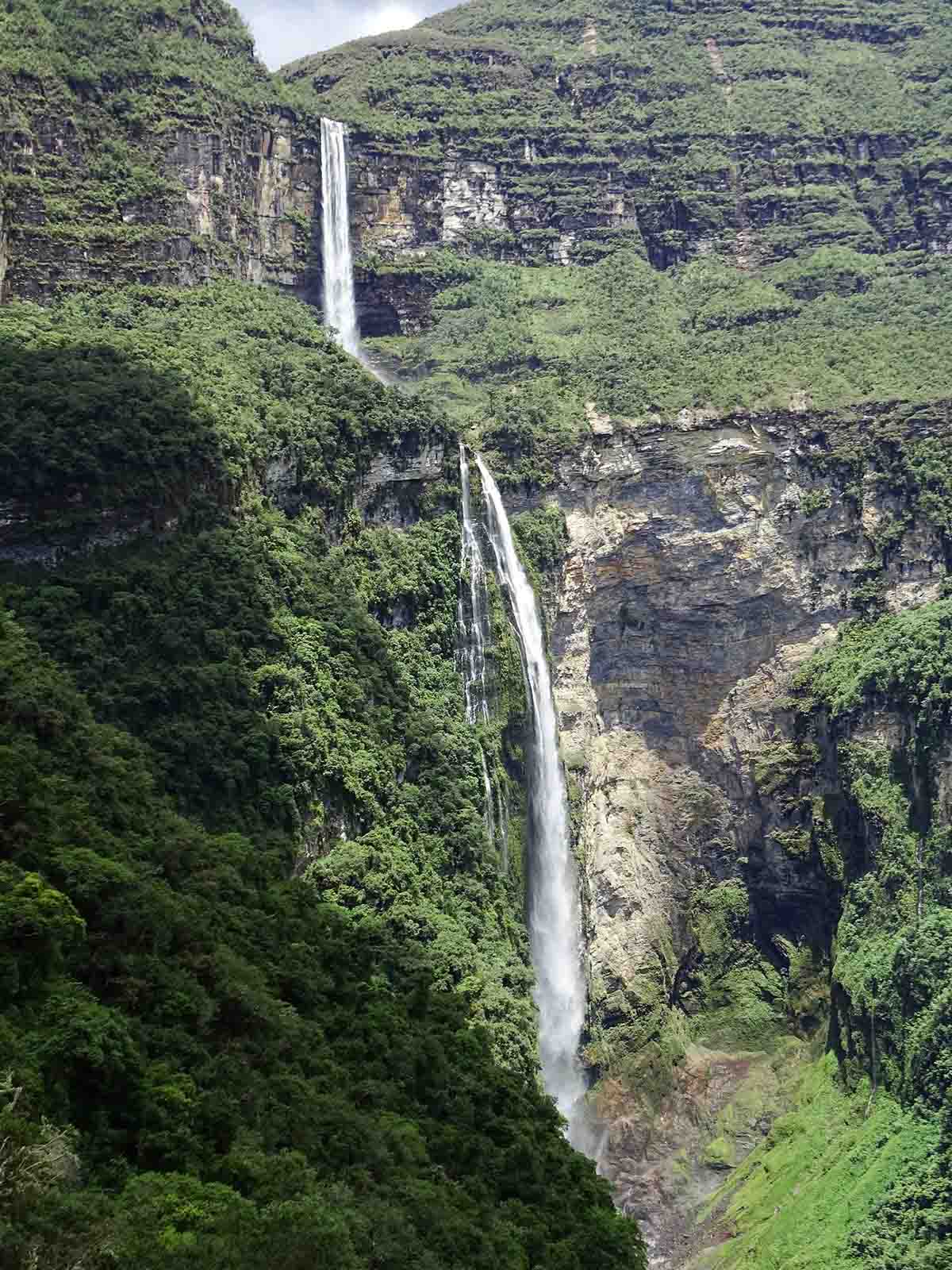
The two drops of the Gocta Waterfall. Image: 771 meters of Gocta by Sucram Yef, used under CC BY 2.0 / Compressed from original
Gocta can be visited on a day trip from the city of Chachapoyas or nearby hotels. While two routes reach the falls, the most accessible and common route is via Cocachimba. From there, you are 3.4 miles (5.5 km) away from the waterfall. Walking into the forest, you are in a prime spot to see the national bird of Peru, the Cock of the Rock, along with other interesting species.
Hiking to Gocta takes about five to six hours round trip, depending on your pace. The hike is of moderate difficulty, but there are lots of uphill and downhill sections in both directions. If needed, you can rent a horse to ride part of the way. The horses can travel about 2/3 of the path. The last section must be on foot.
The altitude in Cocachimba is 5,900 feet (1,800 m) above sea level. At this height, altitude sickness is not a concern.
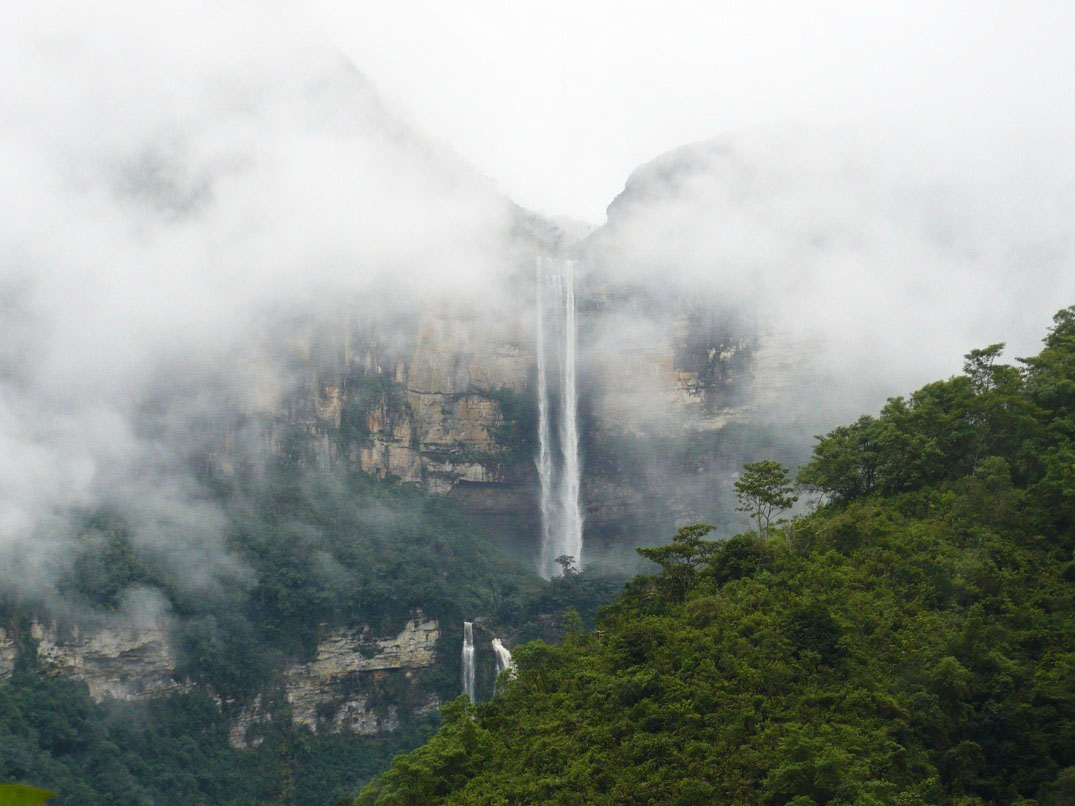
The Gocta Waterfall from afar. Image: amazonas chachapoyas Gocta by Paulo Tomaz, used under CC BY-SA 2.0 / Compressed from original
Cocachimba, the base town of the main trail to Gocta, has several lodges and hotels to choose from. As the area is rather remote, there are no 5-star luxury hotels available. Part of the charm in visiting this region is staying at a more rustic location. However, that does not mean you can’t have a comfortable stay.
The 3-star Gocta Andes Lodge stands out as our top pick hotel. Each room has a view of the Gocta Waterfall from their private terrace or balcony, and the beautiful infinity pool overlooking the falls cannot be beat.
Nearby, you can also find the 3-star Gocta Natura Reserve. This picturesque lodge offers a comfortable stay in one of five private cabins. Views of the waterfall from each cabin and a small pool add to the experience.
You can find other budget hotels and hostels in town. If you prefer a busier scene, check out options in nearby Chachapoyas, the capital of the Amazonas department.
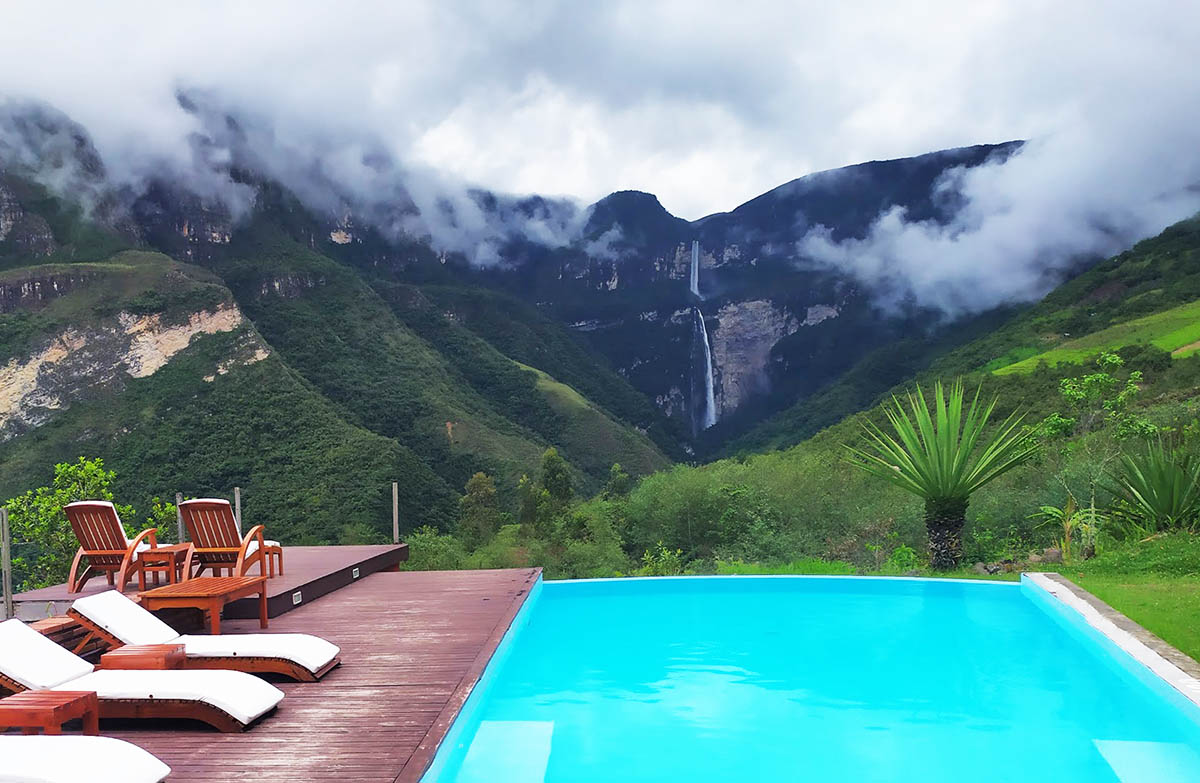
The view of the Gocta Waterfall from the Gocta Andes Lodge. Photo by Mikey Blount of Peru for Less.
The Amazonas region is one of Peru’s best-kept secrets. Full of unique and unforgettable things to see, there is something for everyone. Learn more about our recommended day trips after visiting the Gocta Waterfall below.
A trip to the Chachapoyas area is not complete without a visit to Kuelap Fortress. Kuelap is an enormous archaeological complex constructed by the Chachapoyas civilization between 900 and 1100 CE, with some structures dating back to the 6th century. The circular houses surrounded by finely-worked stone walls are unlike anywhere else. For its spectacular size, ingenious design, and unparalleled state of preservation, Kuelap is beginning to rival Machu Picchu as a must-see for travelers to Peru.
Machu Picchu Tours:
Visit the Mayo River Valley on a day trip to explore the biodiversity the area has to offer. Traversing into the lush Amazon Rainforest, you can find exquisite coffee, colorful orchids, and aguajales (tall palm trees) in abundance in this area.
The Huembo Reserve and the Pomacochas Lagoon offer a unique opportunity to spot several native species of hummingbirds, including the endangered marvellous spatuletail. Confined to this specific area, this is a must-see when it comes to birdwatching in Peru. The males have four tail feathers, two of which are extraordinarily long and end in large violet-blue discs known as ‘spatules’.
Visit the Revash Mausoleums, a Chachapoyas funerary complex, and the Leymebamba Museum, home to 261 mummies. If visiting on a Sunday, stop at the nearby Yerbabuena market, one of the largest in the region.
The indigenous Chachapoyas people practiced incredible, distinct funerary traditions, with no better display than the sarcophagi of Karajia. The seven sarcophagi from the 15th century are in impressive shape due to their isolation high above a river gorge. Combine this with a visit to the Quiocta Caverns to see ancient cave drawings and to learn more about the history and culture of the Chachapoyas civilization.
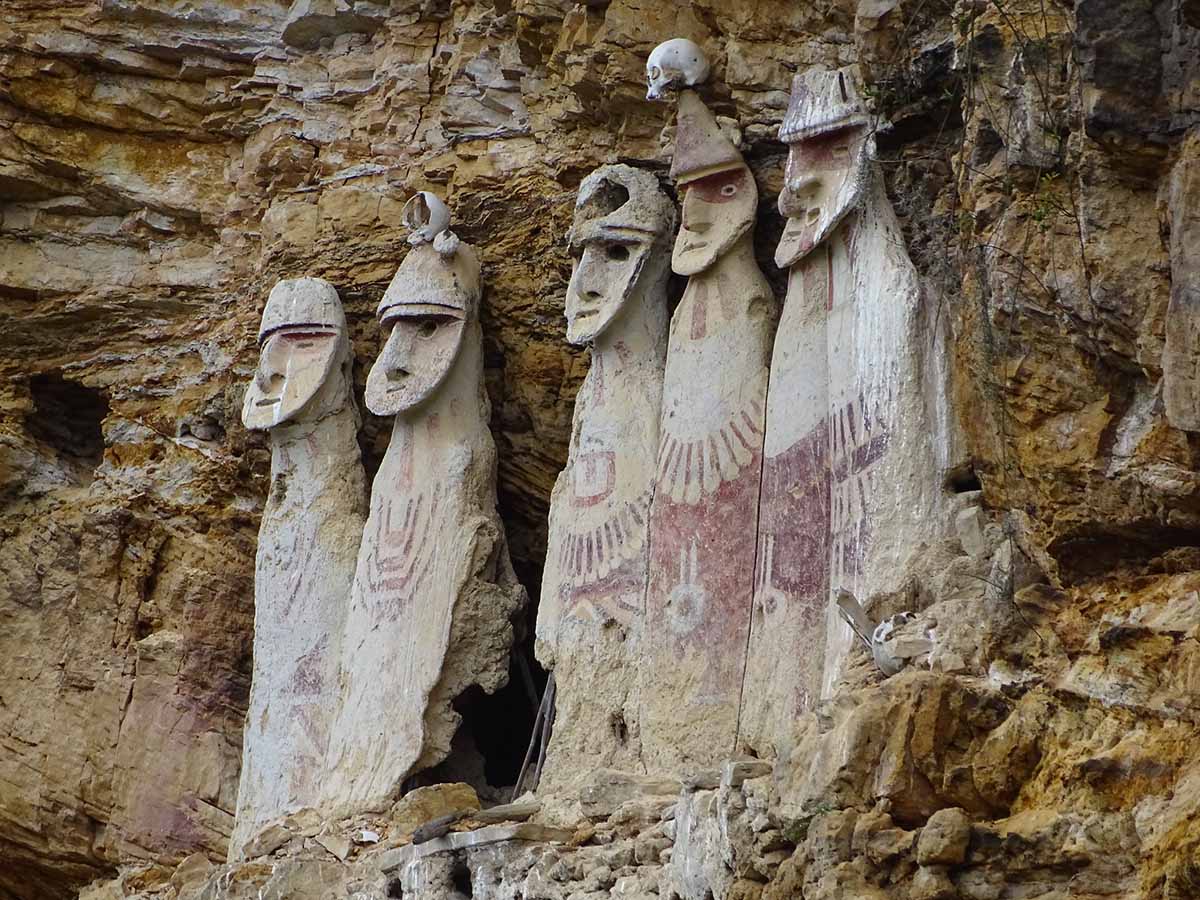
Karajia, a set of sarcophagi from the Chachapoyas. Image: Karajía: Originally eight sarcophagi in the middle of a mountain wall by Sucram Yef, used under CC BY 2.0 / Compressed from original
Gocta Waterfall is a great destination for travelers looking to get off the beaten path and in touch with the natural world around them. Begin planning your trip to the Gocta Waterfall by contacting our team of expert Travel Advisors.



Email: [email protected]
Sign up to receive our newsletter for great articles, stunning photos, and special deals.